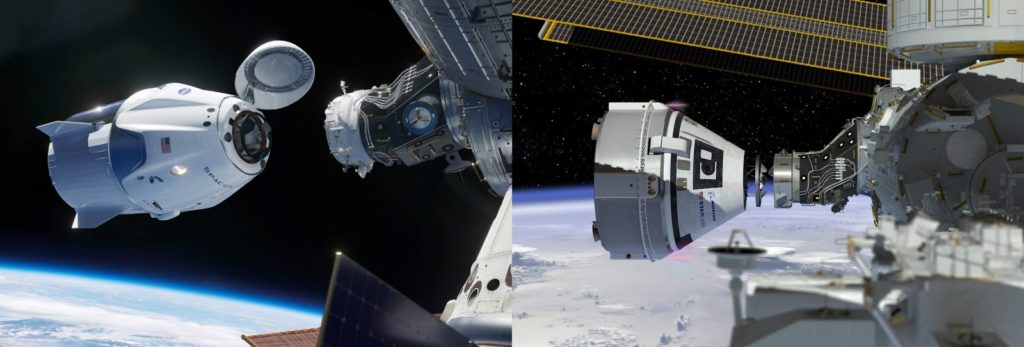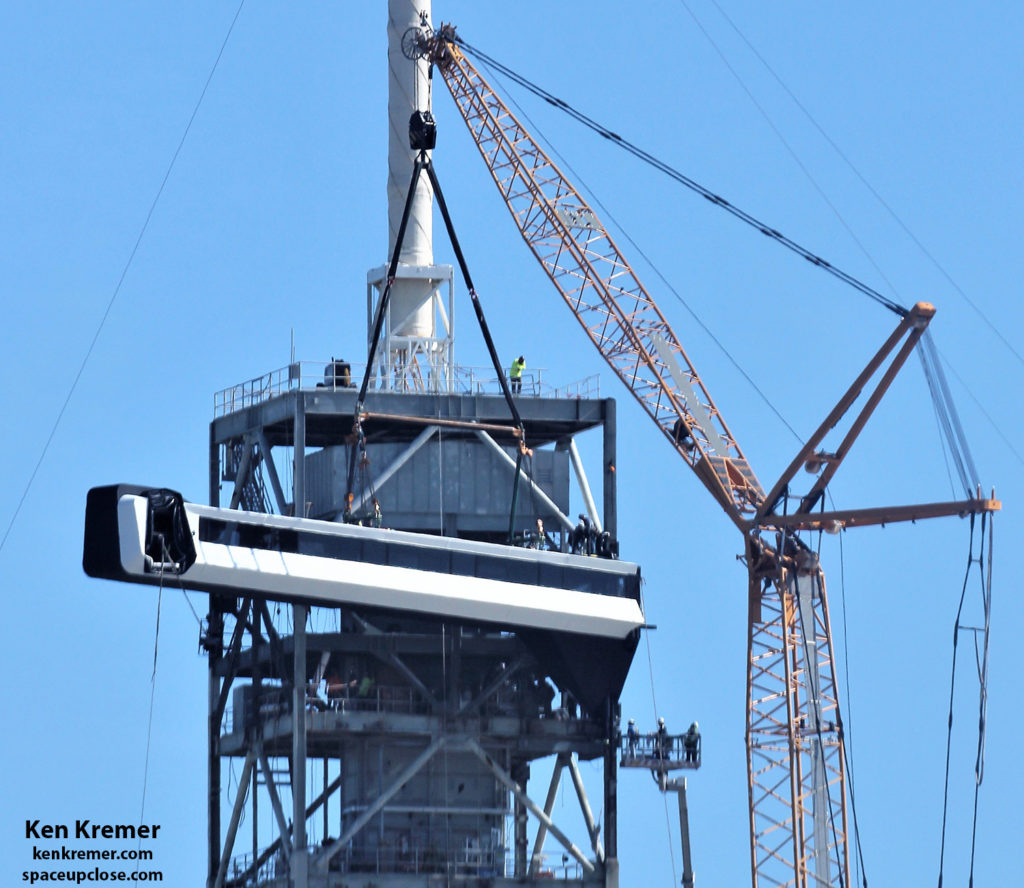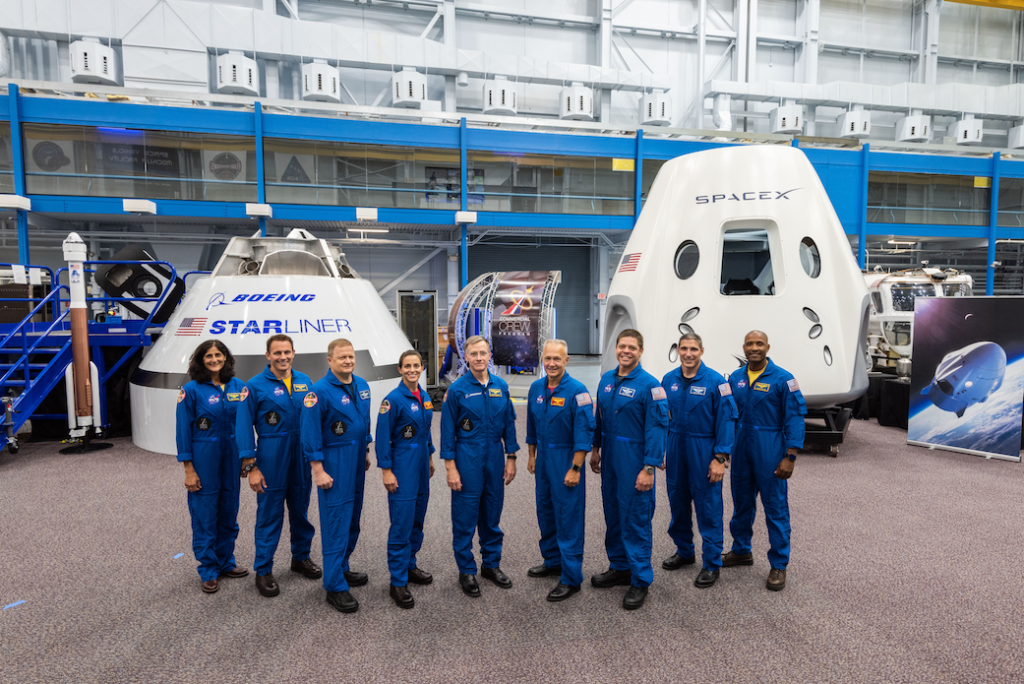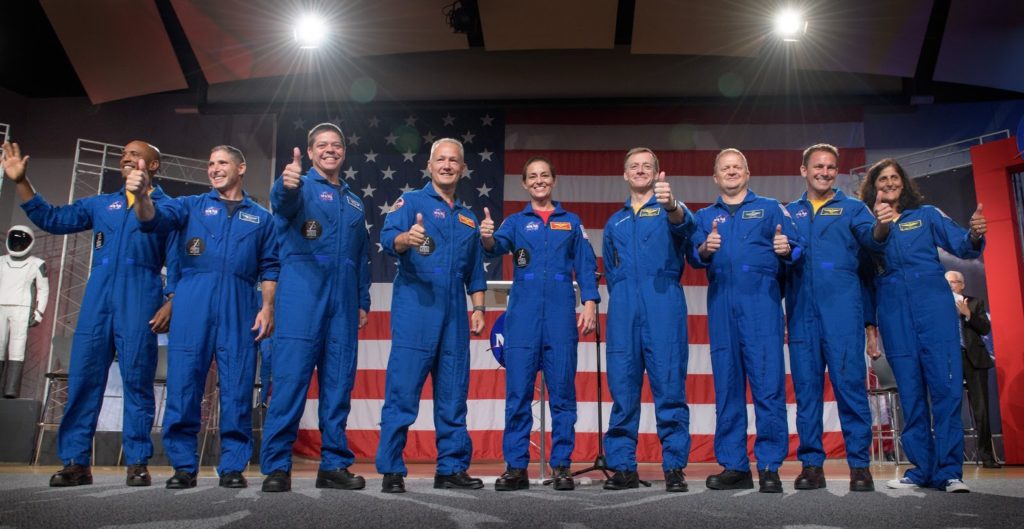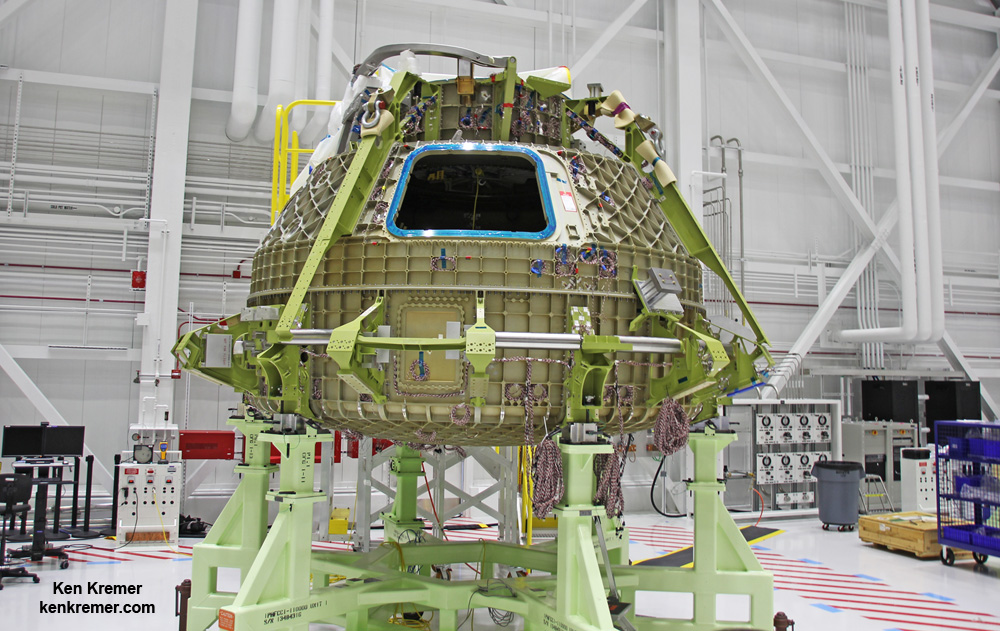Ken Kremer
— SpaceUpClose.com — 5 October 2018
CAPE CANAVERAL, FL –
NASA has confirmed another multi-month slip for the debut commercial crew test flights by Boeing and SpaceX to the International Space Station (ISS) into
2019.
The new delays pertain
to all four of the first four commercial test flights (and beyond) – and include
the inaugural test flights for both the uncrewed and crewed missions by the
Boeing CST-100 Starliner and the SpaceX Crew Dragon – and were announced by
NASA in a statement released Oct 4.
Under the newly released
schedule, the maiden unpiloted test flight by SpaceX dubbed ‘Demo-1’ is now slated
for January 2019, slipping about 2 months from the prior target of mid-November
2018. The prior schedule adjustments changes were outlined in August.
The maiden unpiloted test by Boeing dubbed the ‘Orbital Flight Test’ is
now slated for March 2019, also slipping over 2 months from the prior target of
late 2018.
The first crewed test
flights with astronauts aboard are also now postponed. SpaceX is currently first
in line, with the ‘Demo-2’ test flight shifting from April to June 2019. Boeing trails with its ‘Crew
Flight Test’ shifting from June to August 2019 – despite the fact that Boeing has received 50% more
NASA funding compared to SpaceX.
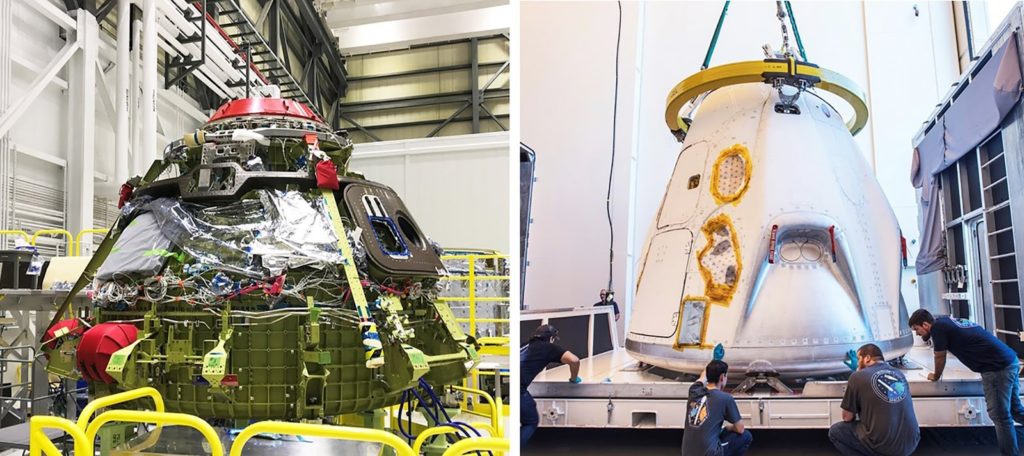 |
|
The Boeing CST-100 Starliner (l) and SpaceX
Crew Dragon (r) currently being manufactured for their respective inaugural launches to the ISS rescheduled to 2019. Credit: NASA/Boeing/SpaceX |
that the ‘Demo-1’ Crew Dragon could perhaps be ready to fly in December, but
NASA says that visiting vehicle traffic by other vehicles apparently preclude any
opportunities by the end of this year.
“SpaceX and the Commercial Crew Program are
working together to have the hardware and associated activities ready for its
first test flight – Demo-1 – in December 2018, but the launch will occur in January
to accommodate docking opportunities at the orbiting laboratory’” said NASA.
Unmanned cargo ships built by both Northrup Grumman
and SpaceX – namely Cygnus and Cargo Dragon – are scheduled to launch to the space station as
soon as mid-November. While berthed for
several weeks or more they will consume time by the station crew on board and
possibly impact access to the commercial crew docking port.
Meanwhile SpaceX is working diligently to get historic
Launch Complex 39A ready at NASA’s Kennedy Space Center. Technicians recently
installed the Astronaut walkway known as Crew Access Arm at the pad that crews will use to board the
Crew Dragon launching atop the SpaceX Falcon 9 rocket.
“Boeing’s targeted readiness for its Orbital
Flight Test is March 2019,” said NASA.
Boeing are developing new human rated spaceships to ferry NASA and partner
astronauts to and from the ISS in low Earth orbit, under Commercial Crew Program (CCP) contracts with the
space agency funded by the U.S. Federal Government.
Flights by the two American-made
spacecraft – also dubbed ‘Space Taxis’ – will end NASA’s total 100% reliance on
the Russians for rides to the orbiting research laboratory aboad Russian-made
Soyuz capsules.
As recently as this past
June 2018, Boeing, SpaceX and NASA were targeting to complete all 4 test flights
by the end of this year – 2018!
flights with astronauts aboard have also now been postponed as additional time
is needed by both Boeing and SpaceX to meet NASA’s stringent safety and reliability
requirements.
astronauts Bob Behnken and Doug Hurley
are training to fly on SpaceX’s Crew Dragon Demo-2 mission, with a planning
date of June 2019. NASA astronauts Eric Boe and Nicole Aunapu
Mann and Boeing astronaut Chris Ferguson
are slated for Boeing’s Crew Flight Test targeted for August 2019,” says NASA.
from the U.S., we can be more precise in our schedules,” said Phil McAlister,
director of Commercial Spaceflight Development at NASA Headquarters, in a
statement. “This allows our technical teams to work efficiently toward the most
up-to-date schedules, while allowing us to provide regular updates publicly on
the progress of our commercial crew partners.”
meet NASA’s requirements, the commercial providers must demonstrate that their
systems are ready to begin regular flights to the space station.”
the test flights are entirely possible.
learning from each test and adjusting as necessary to reduce risk to the crew
may override targeted launch dates.”
“This new process for reporting our schedule is
better; nevertheless, launch dates will still have some uncertainty, and we
anticipate they may change as we get closer to launch,” McAlister said. “These
are new spacecraft, and the engineering teams have a lot of work to do before
the systems will be ready to fly.”
target dates for the first operational crew rotation mission for each commercial
provider.
later in 2019 but NASA did not specify the spacecraft.
the performance data and resolve issues as necessary to certify the systems for
operational missions. The readiness date for the first long-duration Expedition
crew mission is targeted for August 2019 and a second mission is targeted in
December 2019, with the specific spacecraft yet to be determined.
NASA, SpaceX, ULA, Boeing, Lockheed Martin, Orbital ATK and more space and
mission reports direct from the Kennedy Space Center, Cape Canaveral Air Force
Station, Florida and Wallops Flight Facility, Virginia.
and human spaceflight news: www.kenkremer.com –www.spaceupclose.com –
twitter @ken_kremer – email: ken at kenkremer.com
scientist and journalist based in the KSC area.
Ken’s photos are for sale and he is available for lectures and outreach events


